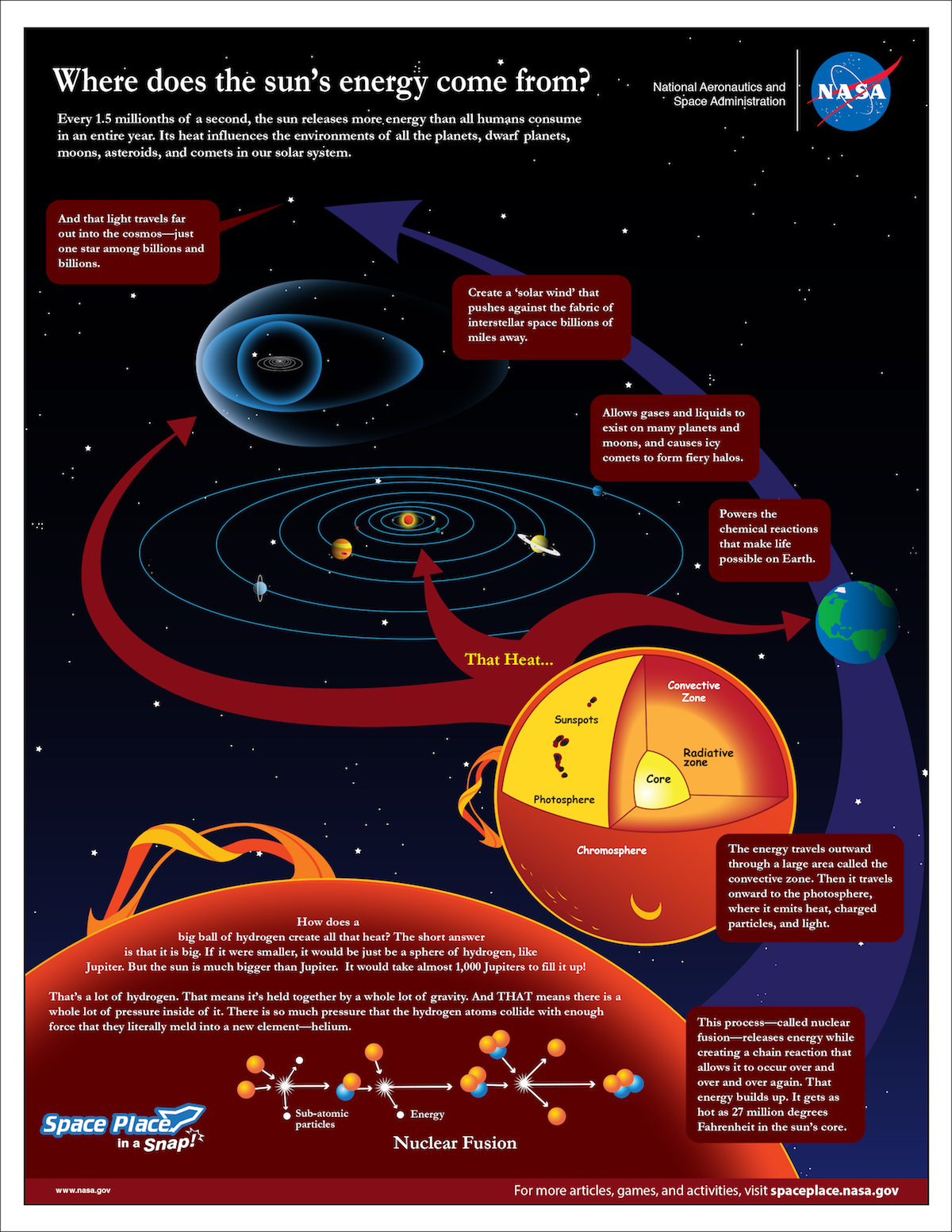Click here to download this video (1920x1080, 128 MB, video/mp4).
Where does the Sun's energy come from?
The Sun's heat influences the environments of all the planets, dwarf planets, moons, asteroids, and comets in our solar system. How does a big ball of hydrogen create all that heat? Learn all about it in this video!

Download a poster of this animation!
8.5 x 11 inches
11 x 17 inches
Click here to read a transcript of this story
Every 1.5 millionths of a second, the Sun releases more energy than all humans consume in an entire year. Without the Sun there would be no light, no warmth, and no life.
Its heat influences the environments of all the planets, dwarf planets, moons, asteroids, and comets in our solar system.
How does a big ball of hydrogen create all that heat? The short answer is that it is big. If it were smaller, it would be just be a sphere of hydrogen, like Jupiter.
But the Sun is much bigger than Jupiter. It would take almost 1,000 Jupiters to fill it up!
That’s a lot of hydrogen. That means it’s held together by a whole lot of gravity. And THAT means there is a whole lot of pressure inside of it.
In fact, the pressure is so intense, and the density so great, that the hydrogen atoms collide with enough force that they literally meld into a new element—helium.
This process—called nuclear fusion—releases energy while creating a chain reaction that allows it to occur over and over and over again.
That energy builds up. It gets as hot as 27 million degrees Fahrenheit in the sun’s core. The energy travels outward through a large area called the convective zone. Then it travels onward to the photosphere, where it emits heat, charged particles, and light.
That heat powers the chemical reactions that make life possible on Earth, allows gases and liquids to exist on many planets and moons, and causes icy comets to form fiery halos.
Those particles create a ‘solar wind’ that pushes against the fabric of interstellar space billions of miles away.
And that light travels far out into the cosmos—just one star among billions and billions.
Not too bad for a big ball of gas, no?




